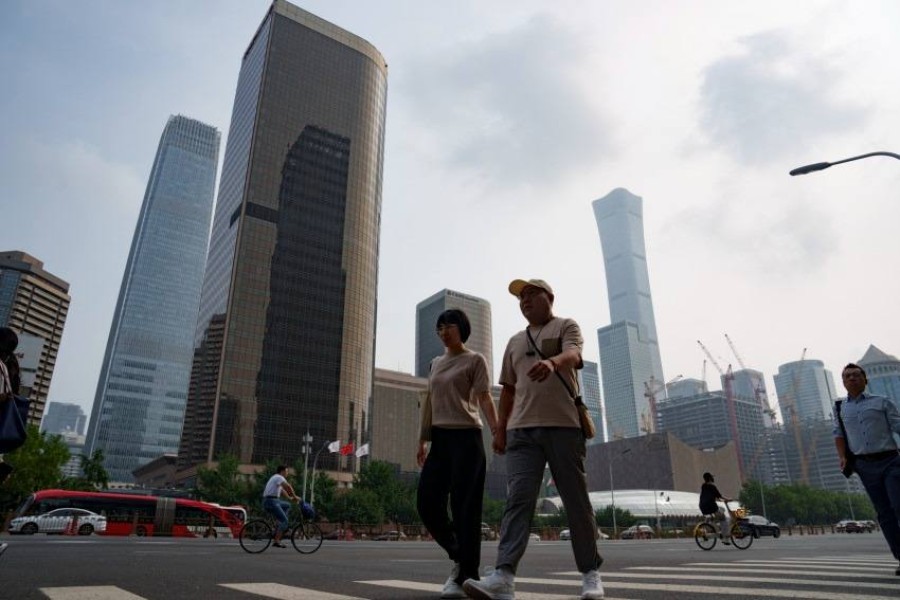China's Economy Slowed in the Last Quarter as Weak Consumer Demand Dragged on Growth

China's economy expanded at a slower-than-forecast 4.7% annual rate in the last quarter, the government reported Monday, while emphasizing signs of improvement in factory output, income and investment.
The expansion was sharply below the 5.3% annual pace of growth seen in the first quarter of the year. The progress this year, after growth slowed sharply during the COVID-19 pandemic, has been “hard won,” the National Bureau of Statistics said.
“There are many difficulties and challenges in promoting the stable operation of the economy,” it said. Economists say weak consumer demand and reduced government spending are dragging on growth in the world's No. 2 economy.
The statistics bureau said the economy grew at a 5% pace in the first half of the year, at the target set by the government for around 5% growth. In quarterly terms, the way many countries report their growth, the economy grew 0.7%.
The update came as leaders of the ruling Communist Party gathered for a once-a-decade conclave to set economic policy that was expected to focus on self-sufficient strategies for growth in an era of tensions over trade and technology.
The four-day meeting of the Communist Party’s 205-member Central Committee is the third plenary session of a five-year term that started in 2022. This year’s meeting was expected to be held last year, but was delayed.
The policies resulting from the closed-door meetings are likely to come days after it ends. Party plenums usually focus on long-term issues, but business owners and investors are watching for any immediate measures to counter a prolonged downturn in the property market and persistent malaise that has suppressed China’s post-COVID-19 recovery.
Recent bright spots suggest growth has stabilized. On Friday, the government reported higher than expected exports in June that further boosted China's trade surplus.
Exports grew 8.6% from the same time a year earlier, though imports fell 2.3%. The trade surplus widened to $99 billion, up from $82.6 billion in May.
The statistics bureau said Monday that factory output rose 5.3% in June. Retail sales, a measure of consumer demand, were up 5.1% in January-May, while nominal disposable income, not adjusted for inflation, grew 5.4%, it said.
Expanding consumer demand is seen as key to supporting sustained strong growth, but has proven difficult as companies shed jobs during and after the pandemic, causing many Chinese families to tighten their purse strings.
Previous Story
- Growth Trends in Real Estate Development - Market...
- Business Network in Ghana - Facilitating Trade and...
- Growth Trends in Furniture Hardware Suppliers Reshape Market...
- Microsoft to report Q3 revenue as Wall Street...
- B2BMAP Joins Hands With Future Digit to Boost...
- Japan's 7-Eleven convenience chain targets aggressive global growth
- Global economy improving but challenges persist, G24 says
- South Africa Suppliers Driving Global Trade Growth